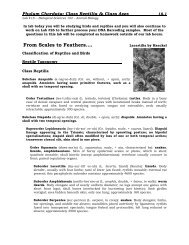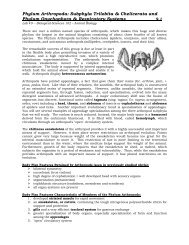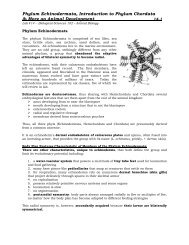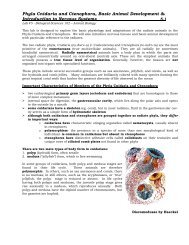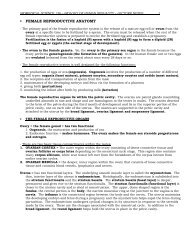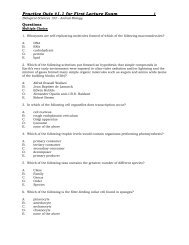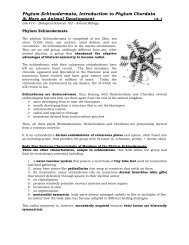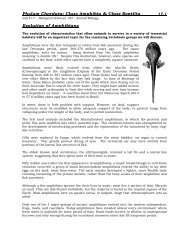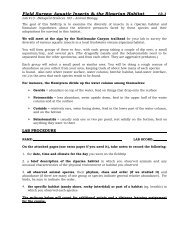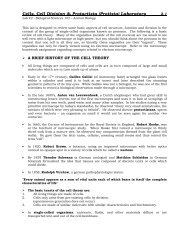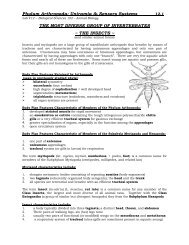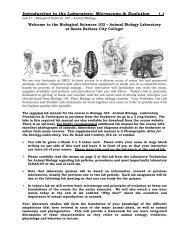Phyla Cnidaria and Ctenophora, Basic Animal Development ...
Phyla Cnidaria and Ctenophora, Basic Animal Development ...
Phyla Cnidaria and Ctenophora, Basic Animal Development ...
You also want an ePaper? Increase the reach of your titles
YUMPU automatically turns print PDFs into web optimized ePapers that Google loves.
<strong>Phyla</strong> <strong>Cnidaria</strong> <strong>and</strong> <strong>Ctenophora</strong>, <strong>Basic</strong> <strong>Animal</strong> <strong>Development</strong> &<br />
Introduction to Nervous Systems 5.11<br />
Lab #5 - Biological Sciences 102 – <strong>Animal</strong> Biology<br />
Class Cubozoa<br />
Observe the specimen <strong>and</strong>/or diagram of Carybdea sp.<br />
Record the descriptive information requested at the end of the lab for this species.<br />
Class Anthozoa<br />
Subclass Hexacorallia<br />
Observe the specimens <strong>and</strong>/or diagrams of the following species.<br />
Record the descriptive information requested at the end of the lab for these species.<br />
Balanophyllia elegans<br />
Note that the scleractinian hexacorallians (stony corals) synthesize a consolidated calcium<br />
carbonate skeleton while anemones do not.<br />
Anthopleura sola<br />
What accounts for the green color often present in this species?<br />
Feeding Demonstration in an Anthozoan<br />
As available, your instructor may feed a small piece of mussel to one of the anemones on<br />
display in the lab.<br />
Briefly describe the feeding behavior of the anemone:<br />
Cnidocytes <strong>and</strong> Examination of Nematocyst Discharge<br />
Cnidocytes are cells found in the epidermis between epitheliomuscular cells of cnidarians.<br />
Cnidocytes have nematocysts which are tiny capsules composed of material similar to chitin<br />
<strong>and</strong> contain a coiled tubular filament which is a continuation of the narrowed end of the<br />
capsule. This end of the cnidocyte is covered by the operculum. The base of the filament may<br />
have spines are barbs. The filament <strong>and</strong> barbs may contain a poison. The cnidocytes in<br />
anthozoans do not have the trigger-like cnidocil. The cnidocil is a modified cilium. In<br />
anthozoans a modified ciliary-like mechanoreceptor is involved in triggering nematocyst<br />
discharge.



